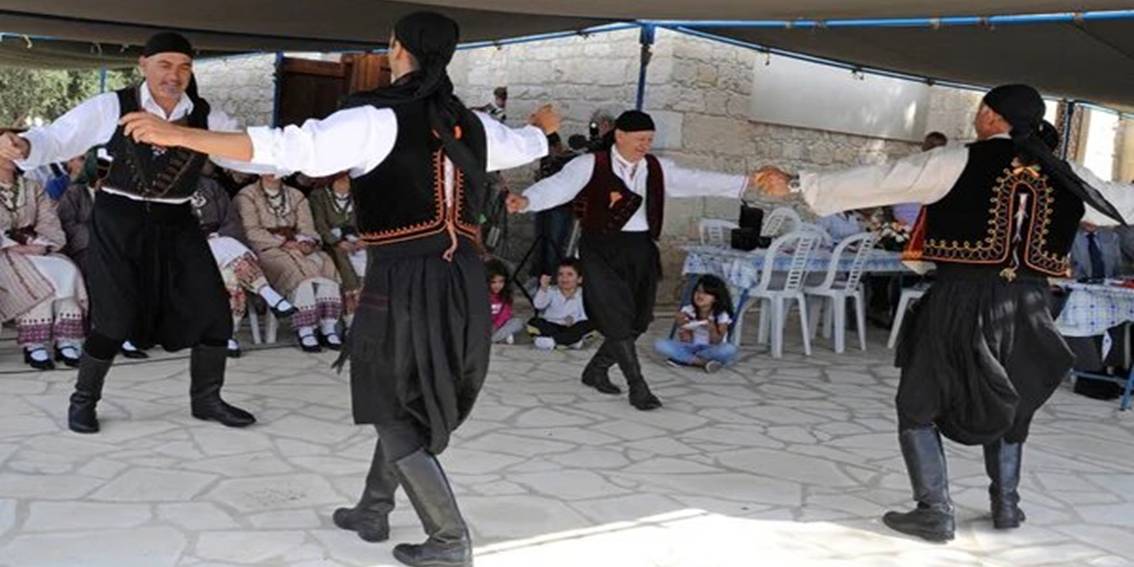A Dance Connected with Cyprus and Greece
The Cypriot dance Zeipekiko holds deep cultural significance, with its roots stemming from the ancient traditions of Cyprus and Greece. Its rhythm and movements reflect the emotions and experiences of those performing it, often associated with individual struggle, defiance, and celebration themes. Zeipekiko stands as a unique dance that embodies the spirit of freedom and personal expression. Unlike other folk dances that involve group performances, Zeipekiko is traditionally a solo dance. The dancer, usually male, uses the performance to express personal emotions, ranging from sorrow and melancholy to pride and resilience.
The Cyprus Dance Zeipekiko
The origins of the Cypriot Dance Zeipekiko trace back to the Ottoman Empire, with connections to the Zeybeks, a rebellious group of warriors from the Aegean region of Turkey. These fighters, known for their independence and resistance against authority, inspired the creation of this dance. As a result, Zeipekiko carries a sense of rebellion and defiance, qualities that Cypriots incorporated into their own culture after centuries of foreign rule and occupation. The history of Cyprus, marked by periods of colonization, invasion, and internal struggle, finds a voice through the power of Zeipekiko.
Unlike more structured and choreographed dances, the Cypriot Dance Zeipekiko remains largely improvisational. Each dancer brings their own personality and story to the performance. Dancers often begin in a crouched or kneeling position, symbolizing humility or burden, before rising to their feet with slow, deliberate movements. These motions grow in intensity as the dance progresses, mirroring the emotional journey of the dancer. The dancer stamps their feet to emphasize their presence and control over their surroundings, as though confronting the challenges of life. Each movement, be it subtle or grand, carries a distinct emotional weight.

The music that accompanies Zeipekiko plays a crucial role in shaping the performance. The rhythm typically follows a 9/8 time signature, which contributes to the dance’s distinctive feel. This irregular rhythm demands careful attention from the dancer, as it creates an unpredictable, almost staggered beat. Traditional instruments, such as the bouzouki, baglamas, and sometimes oud, provide the melodic framework for the performance. The sounds these instruments produce range from hauntingly melancholic to fiercely passionate, further enhancing the emotional intensity of the dance. The music complements the dancer’s movements and emotions, and in some cases, dictates the flow of the performance.
How the Dance is Performed
When performed, Zeipekiko often evokes a sense of catharsis. The solo dancer occupies the centre of attention, while the audience surrounds them, creating an intimate and personal space for the performance. Unlike other social dances that encourage audience participation, Zeipekiko places the dancer at the forefront. Those watching may offer encouragement by clapping or by tossing flowers at the feet of the dancer, but they generally remain observers, allowing the performer to have their moment of personal expression.
The performance of Zeipekiko requires both physical strength and emotional depth. Dancers move with purpose, their feet stamping the ground with force and conviction. The sharp turns, abrupt pauses, and sudden bursts of energy demand balance and control. The dancer must also convey emotion through body language, using subtle shifts in posture or changes in expression to communicate their internal state. At times, dancers might even incorporate the use of props, such as a handkerchief or a glass of wine, further personalizing their performance. These objects can symbolize various emotions, from loss to triumph, depending on how the dancer chooses to use them.

Despite its ancient roots, Zeipekiko continues to evolve. Modern interpretations of the dance often reflect contemporary issues and personal struggles, while still adhering to its core themes of defiance, resilience, and emotional expression. In Cyprus, the dance serves as a link to the past, reminding the people of their shared history and cultural heritage. It stands as a testament to the strength of the Cypriot spirit, which has endured centuries of hardship and conflict.
One of the Most Popular Dances of Cyprus
The popularity of Zeipekiko has transcended the borders of Cyprus, making its mark in Greek culture as well. It has been performed in Greek tavernas and festivals for decades, often during moments of personal reflection or during celebrations of significant life events. At weddings, Zeipekiko offers a moment for individuals to reflect on their personal journey, while at funerals or memorials, it expresses sorrow and remembrance. The dance, therefore, serves multiple purposes, depending on the context in which it is performed.
Zeipekiko reflects the individual’s inner journey, making it one of the most personal and profound dances within Cypriot culture. Its themes of resilience, rebellion, and emotional expression resonate with the people of Cyprus, whose history is one of struggle and survival. Dancers use their performance as a means of communicating their own stories, often drawing upon their own life experiences for inspiration. Every performance tells a different tale, and each dancer brings a unique interpretation of the dance’s core themes. Through Zeipekiko, performers and audiences alike connect with a sense of identity, both personal and cultural.
This dance embodies more than just movement and rhythm—it reflects the spirit of a people who have fought for survival and self-expression. The improvisational nature of the dance allows each performance to become a unique act of storytelling. The dancer commands the floor, using the rhythm and music to express the complexity of the human experience. Zeipekiko, with its rich history and deep emotional resonance, remains a vital part of Cypriot cultural heritage. Through its continued performance, the dance preserves not only the traditions of the past but also the emotional narratives of the present.




